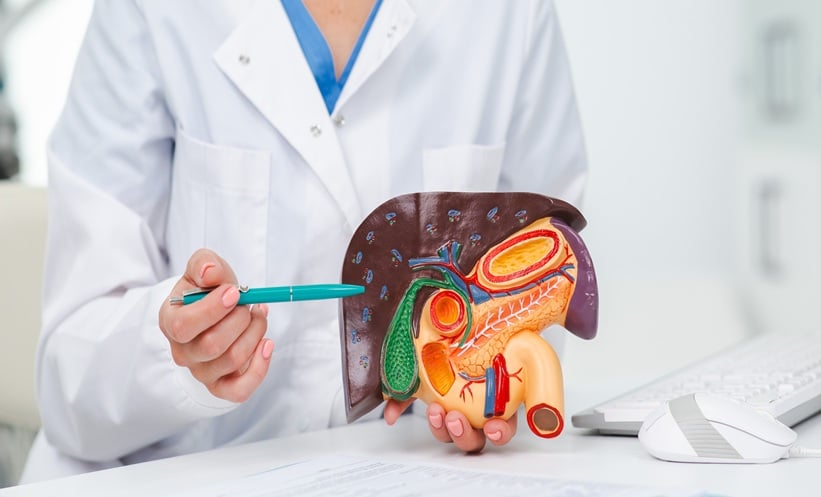BILE LEAKAGE (BL) remains a notable complication following hepatectomy, with incidence rates reported between 4% and 8%. While many leaks are minor, more severe cases can lead to infections, liver failure, prolonged hospitalisation, and increased healthcare costs. Traditional detection methods rely on visual inspection during surgery, which can miss small or hidden leaks, potentially leading to biliary fistulae.
A recent prospective study explored the effectiveness of using indocyanine green (ICG) – a fluorescent dye typically used to assess liver function – to improve intraoperative detection of BL. Administered intravenously, ICG is absorbed by liver cells and excreted into bile, allowing surgeons to visualise bile leaks using near-infrared (NIR) imaging. This method revealed significantly more leakage sites compared to the naked eye and allowed immediate intervention during surgery.
The study compared patients who underwent ICG-guided imaging (I-G group) with those assessed through conventional visual methods (H-G group). Results showed a marked reduction in total bilirubin concentration in the drainage fluid on postoperative day 3 among I-G patients, a recognised surrogate marker for BL. Additionally, the I-G group experienced fewer Grade B leaks, shorter hospital stays, and fewer complications of Clavien–Dindo grade II or higher.
While the study was limited by its single-centre design and lack of randomisation, its findings suggest ICG imaging may improve early leak detection, especially in cases where bile ducts are not connected to the main duct, known as Nagano type D injuries, which are often missed by traditional techniques.
Though further multicentre trials are needed to validate these results, this research supports the use of ICG-guided assessment as a safe, practical tool to reduce BL risk. Incorporating this method into standard surgical practice could lead to fewer complications, improved recovery, and better outcomes for patients undergoing liver resection.
Reference
Hanaki T et al. Systemic indocyanine green administration to detect bile leakage after liver surgery: a prospective clinical trial, using historical controls. BMJ Open. 2025;15(6):e097205.








